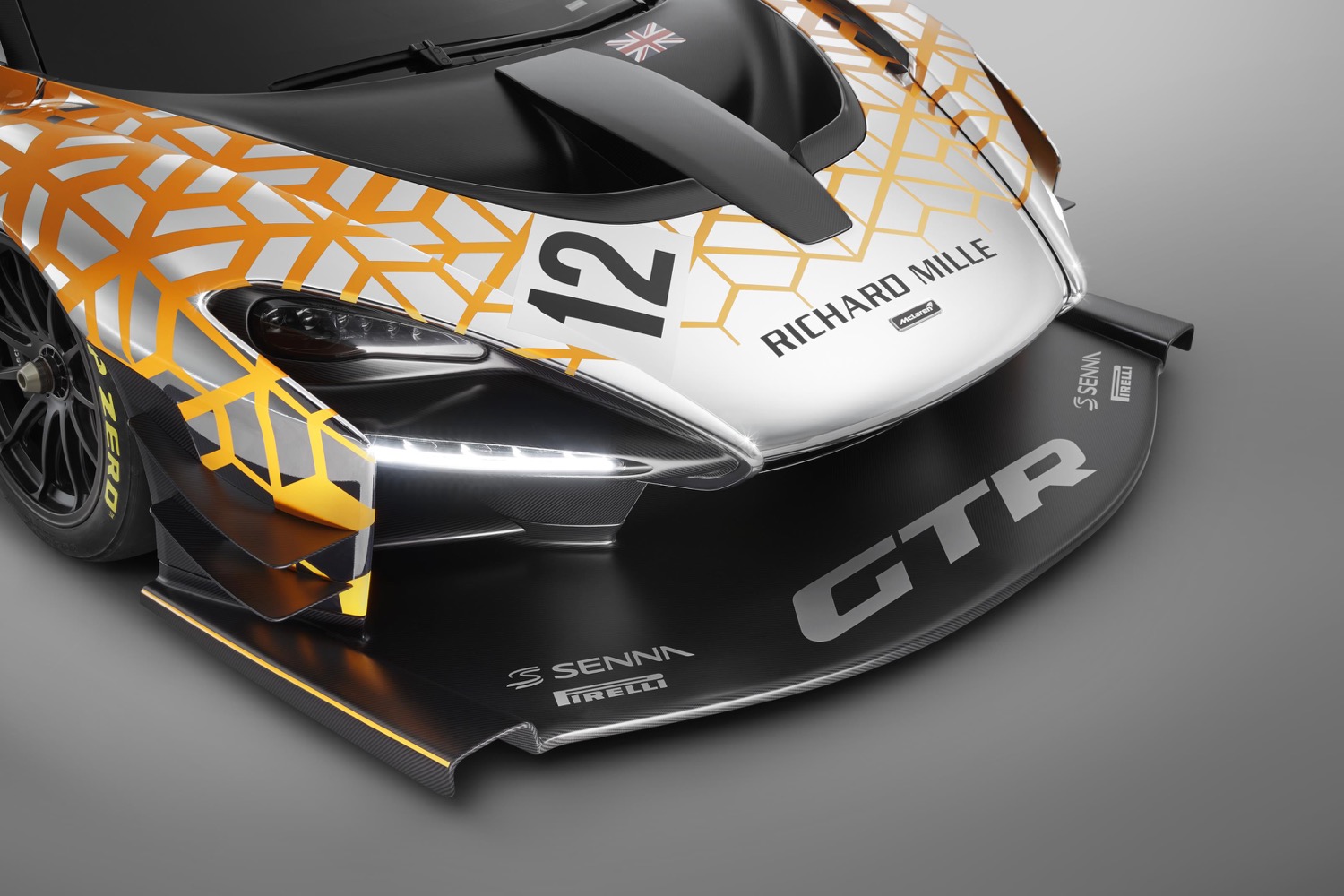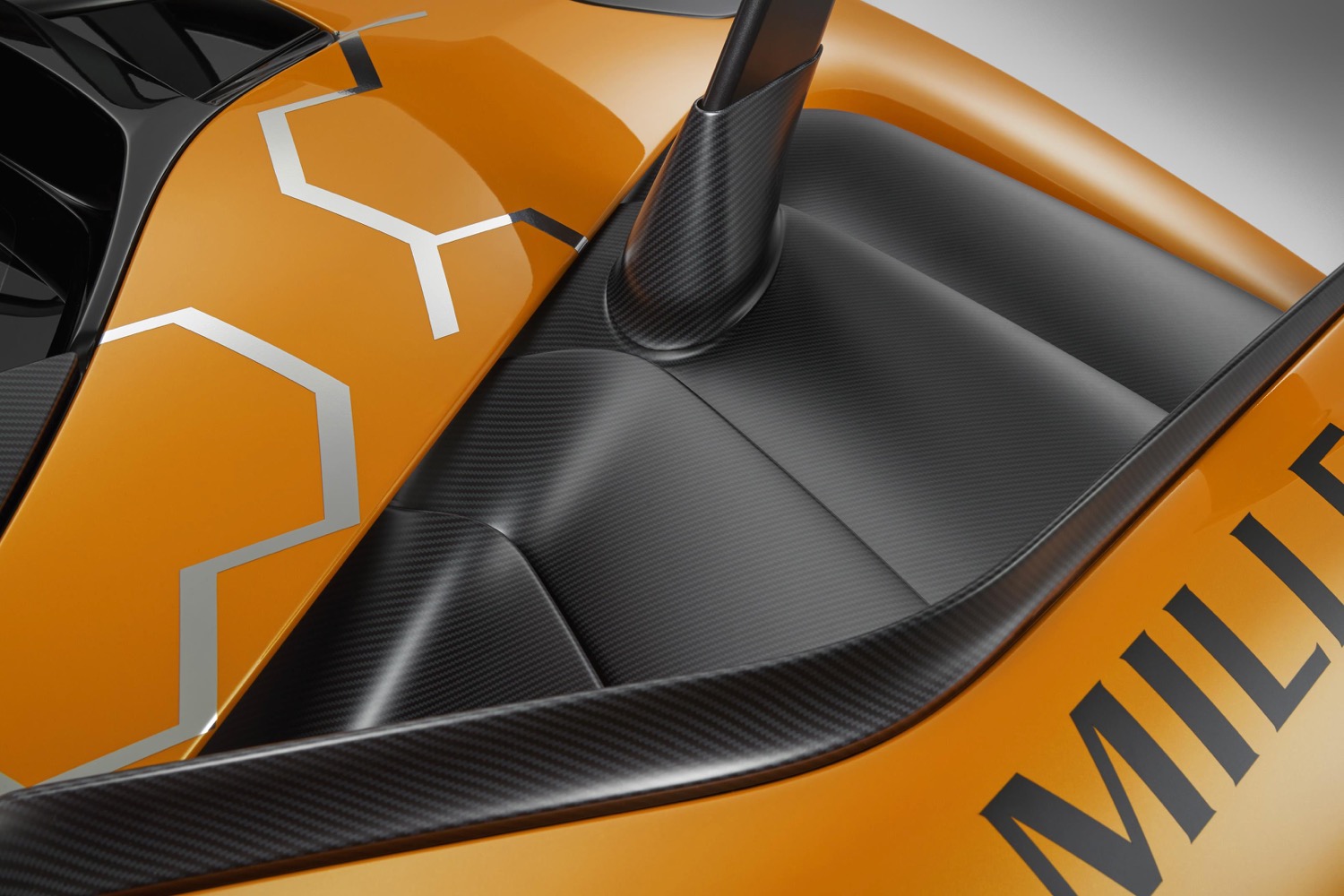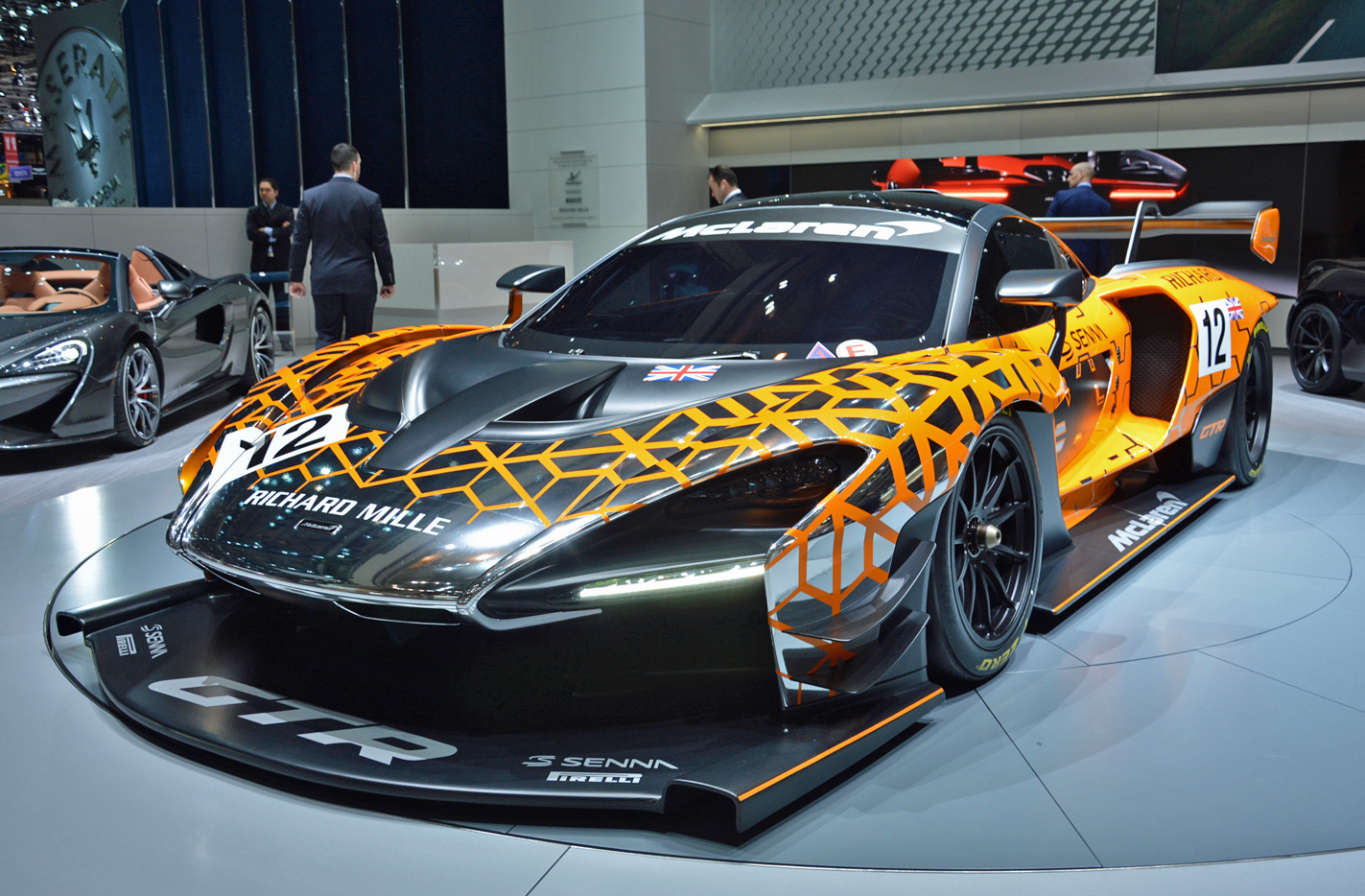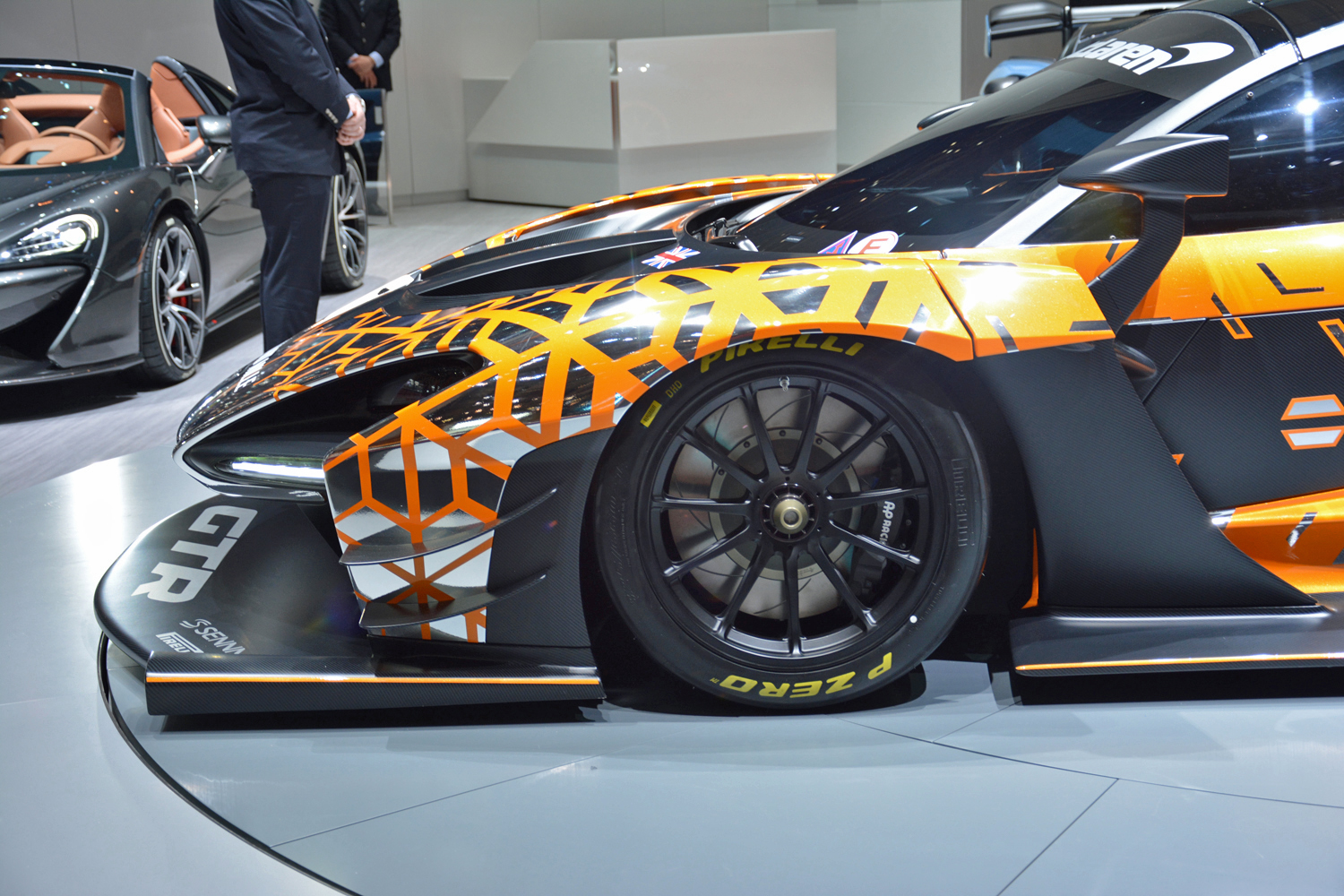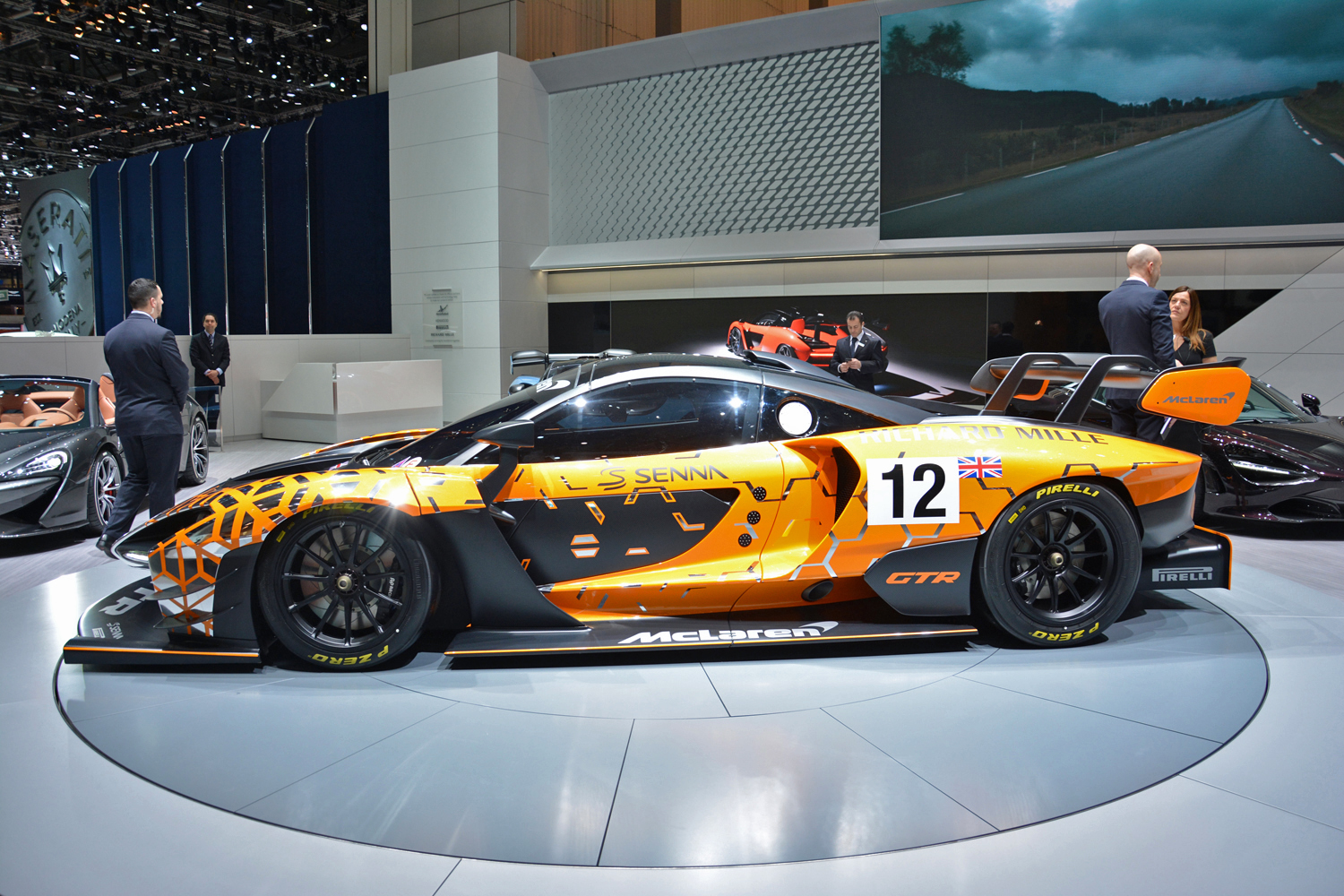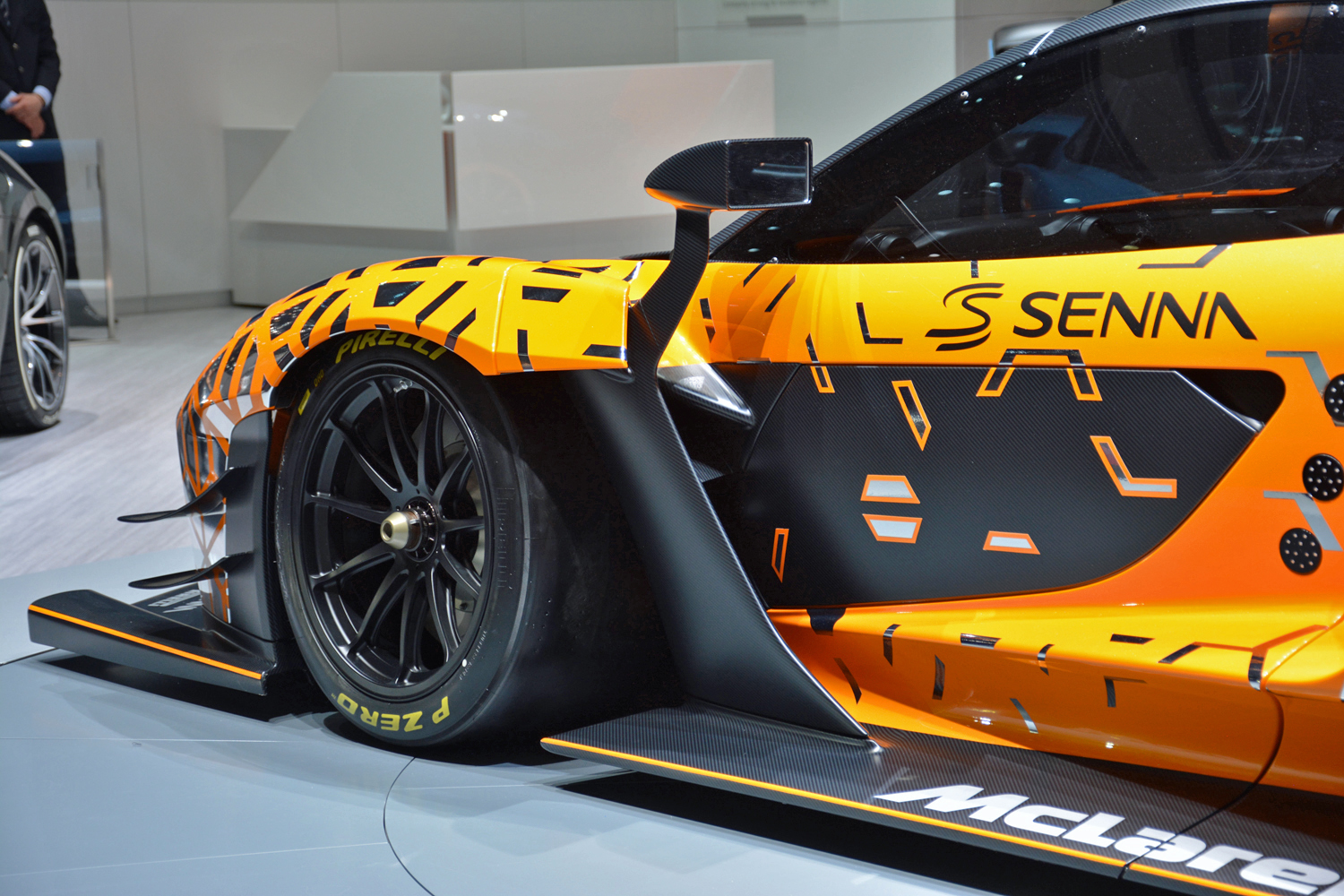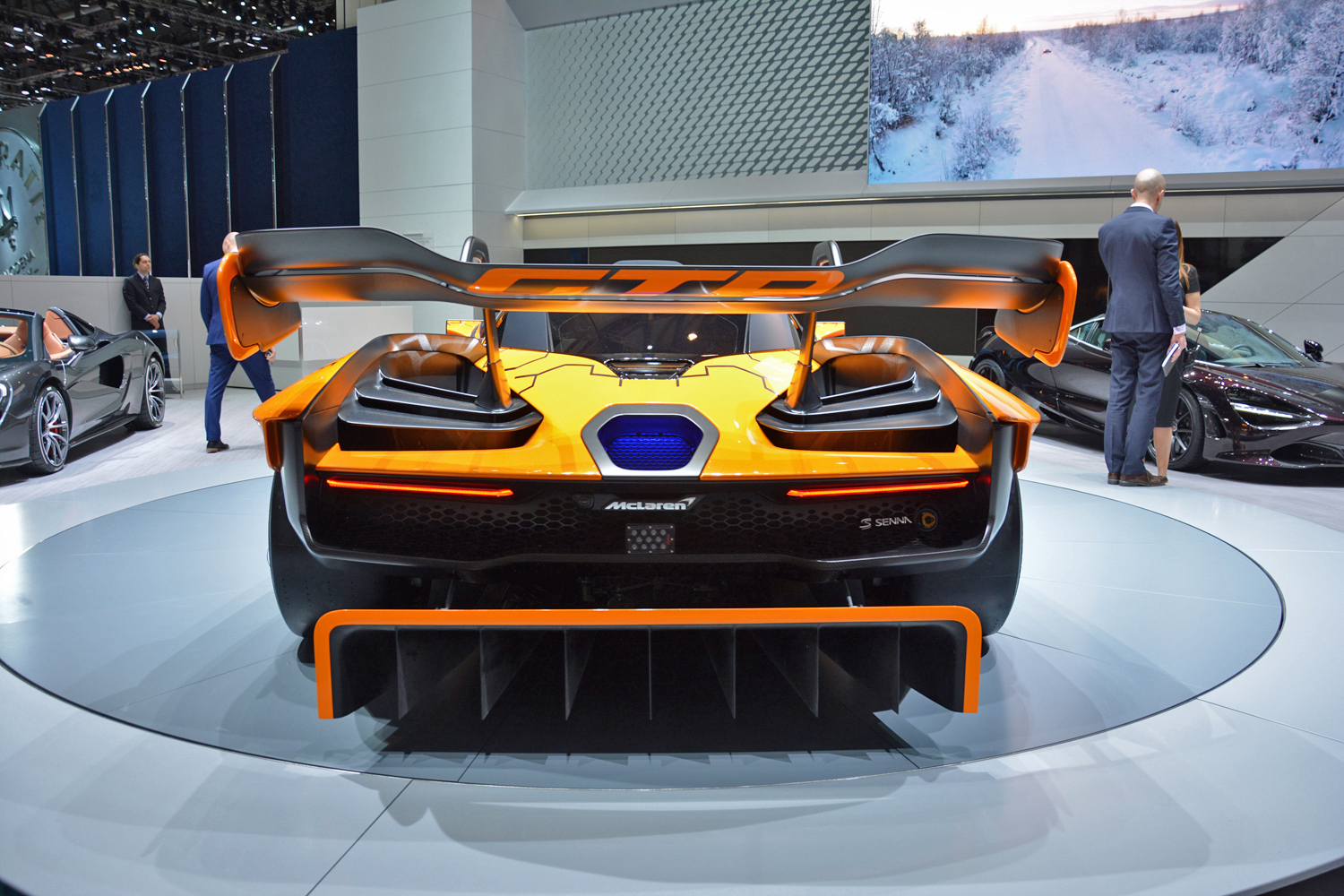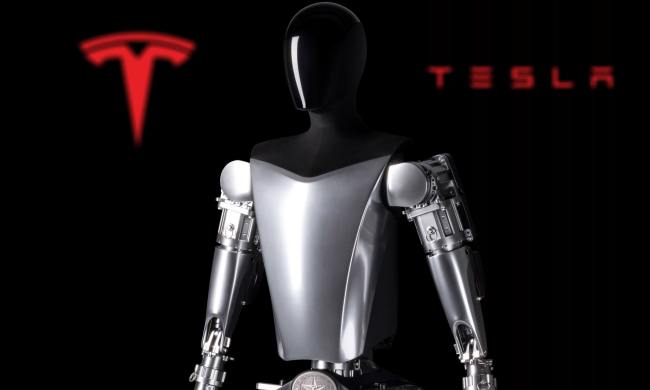The McLaren Senna isn’t the kind of car that leaves you wanting. Named after legendary Formula One driver Ayrton Senna, it boasts 789 horsepower, a claimed top speed of 211 mph, and sophisticated aerodynamic features. But McLaren isn’t done yet.
Debuting at the 2018 Geneva Motor Show, the McLaren Senna GTR is a hardcore, track-only version built purely to run quick lap times. It can lap a racetrack quicker than any McLaren outside of Formula One, the company claims. While the car unveiled in Geneva is technically a concept, McLaren said, the company is already taking orders for up to 75 production models.
The GTR treatment starts with the engine. Power from the 4.0-liter twin-turbocharged V8 can hit 814 hp, and McLaren said the GTR will also generate more than the “standard” Senna’s 590 pound-feet of torque, but declined to quote a specific figure. The upgraded engine won’t have much weight to push, as the GTR will be similar in weight to the standard Senna, which tips the scales at just 2,641 pounds (dry weight).
When McLaren designed the Senna, it took the concept of “form follows function” to new extremes. Aerodynamics takes priority over styling, yielding a car with looks that have proven … controversial. The Senna GTR doubles down on that philosophy. It can generate 2,200 pounds of downforce, according to McLaren, thanks to a front spoiler and rear diffuser that jut out from under the car like mower decks. They may not look pretty, but if McLaren is right, they’ll help the Senna GTR stick to the track better.
The track is where the Senna GTR will live, because this beast is not road legal. And that’s OK. The previous McLaren P1 GTR, and numerous other track-only specials like the Ferrari LaFerrari FXX K and Aston Martin Vulcan, have proven that rich customers don’t mind spending their money on cars they can’t drive on the road.
Order books for the McLaren Senna GTR haven’t officially opened yet, but the automaker is taking “expressions of interest.” McLaren will build 75 Senna GTRs once production of the 500 road-legal Sennas is completed, meaning production will likely start in 2019. The price will be somewhere around 1 million British pounds, or $1.39 million U.S. at current exchange rates. Anyone with that kind of money probably won’t have trouble booking a track to let their Senna GTR loose.





